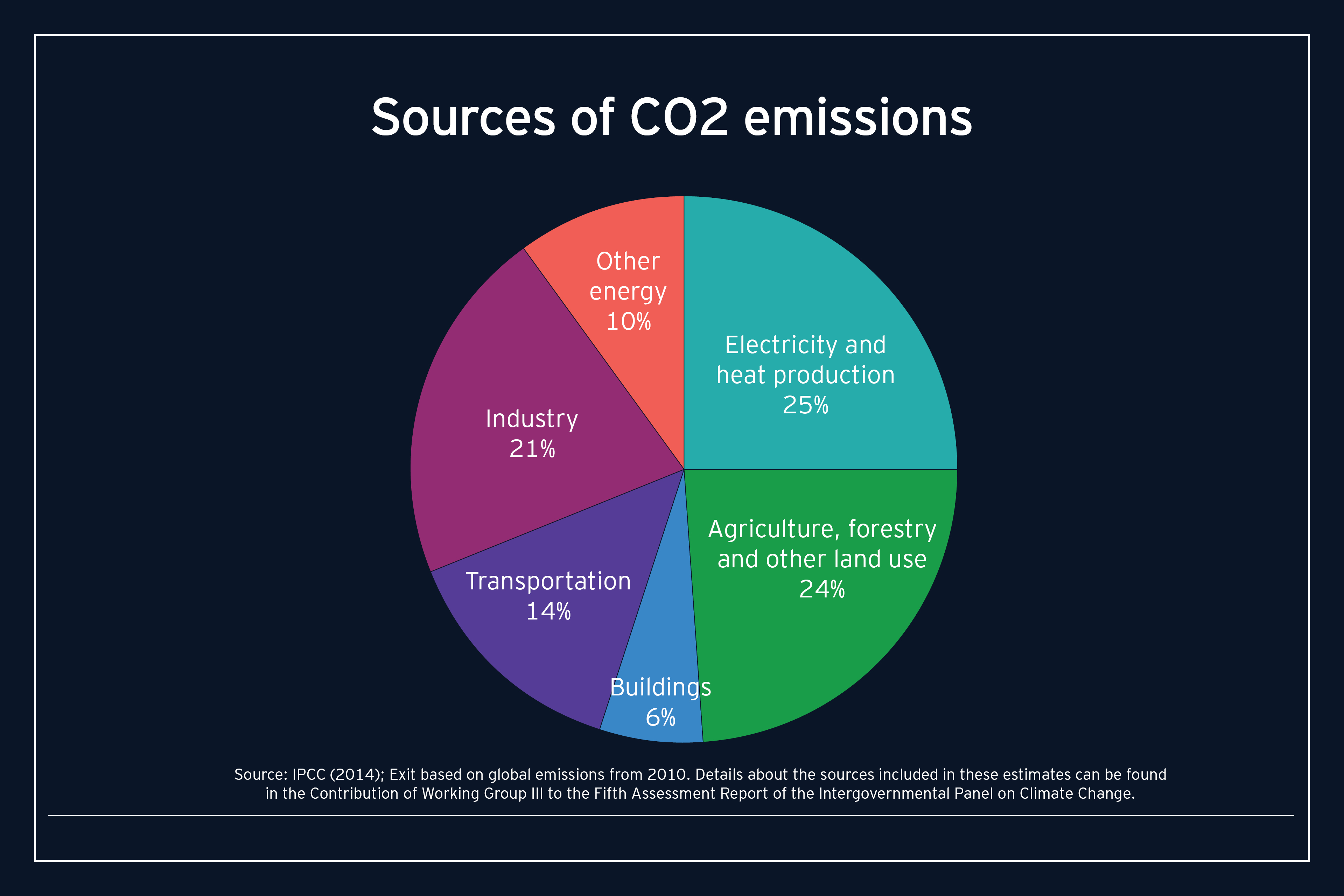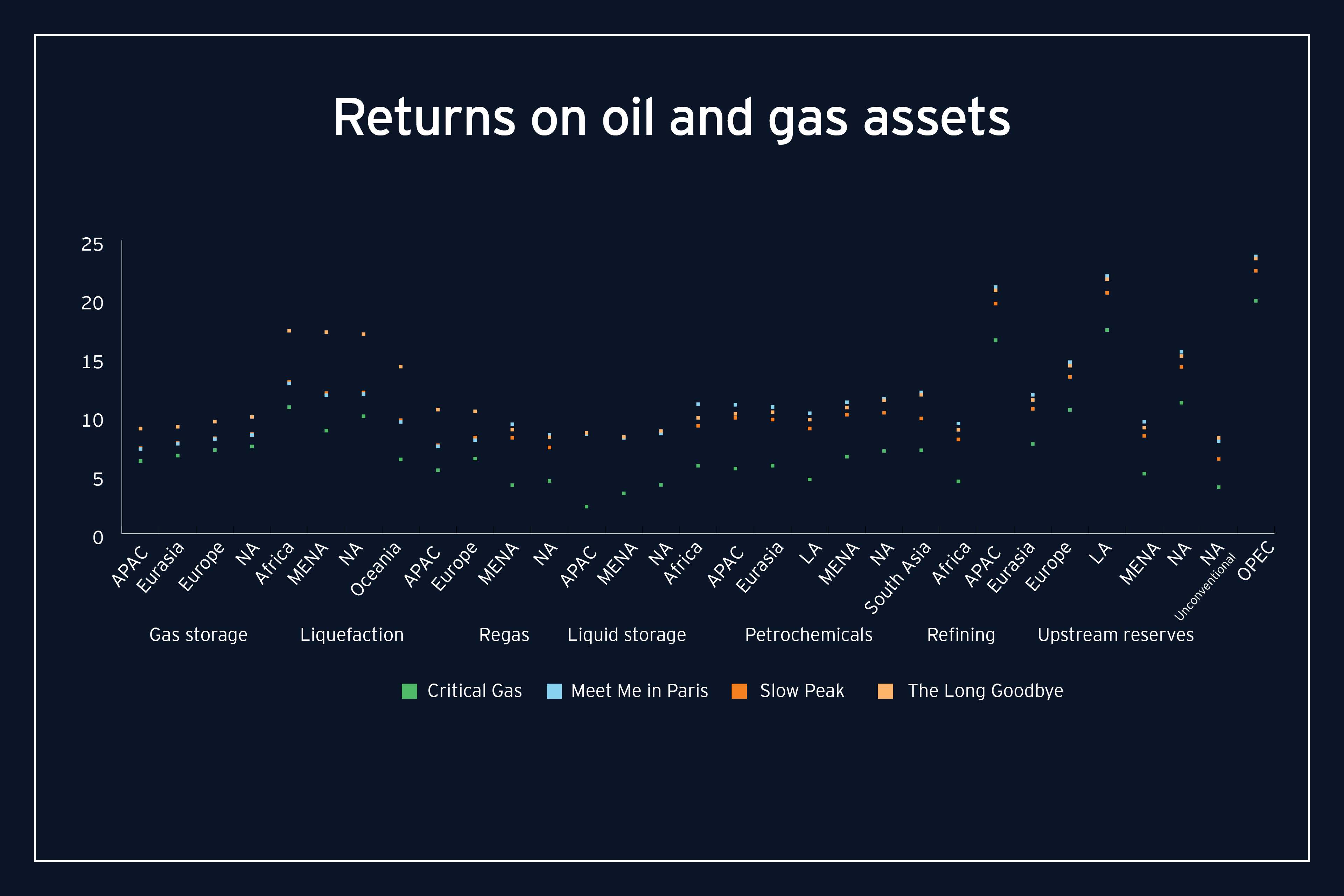Meet Me in Paris depicts the best-case scenario when it comes to the transition to low-carbon or no-carbon energy. None of the other three scenarios shows such a rapid move to low- or no-carbon energy.
So, what does it take to Meet Me in Paris?
Electric vehicle penetration
Transportation accounts for about 15% of carbon dioxide emissions. Transition from gasoline-powered cars to EVs won’t solve the climate change problem, but it will make a significant difference. Of course, that transition won’t accomplish anything if gasoline and diesel fuel are displaced by electricity generated from coal. And if they’re displaced by natural gas, the effect won’t be as great as we’d like.

| Meet Me in Paris | Critical Gas | The Long Goodbye | Slow Peak | |
| 2035 EV penetration by Scenario | 99% | 41% | 37% | 22% |
Market penetration in 2018 was 2%, approximately double what is was in 2017. Achieving 99% by 2035 could happen with a sustained 25% annual share growth. Aggressive, but that’s what it will take to achieve the Meet Me in Paris scenario.
Gas and renewables in the generation mix
At present, power generation accounts for 25% of carbon dioxide emissions. End use sectors (industry and buildings) account for another 27% and are expected to be increasingly, or completely, electrified in most net carbon neutrality scenarios. If electrification is the key to decarbonization, it’s essential that power generation be decarbonized.
Under ordinary circumstances, power sector decarbonization would occur through attrition. Fossil fuel plants would gradually wear out and be replaced by solar, wind and other zero-carbon generation. However, a process of attrition and replacement will not lead us down a path consistent with the goals of the Paris Agreement. It will be necessary to proactively retire fossil-fuel plants and replace them with plants that don’t produce carbon.
For the scenarios, EY teams measured the speed of transition to renewables by determining what percentage renewables and natural gas take, after accounting for demand growth, coal attrition and increases or decreases in nuclear generation. Under Critical Gas, the marginal share is 55% renewables. Under Long Goodbye, it’s 80%. And under Meet Me in Paris, it’s 105%.
In other words, for every 100 megawatt-hours (MWh) of “new” power (demand growth adjusted for changes in coal and nuclear) generated by renewables, 5 MWh of natural gas generation is taken away.
The role of coal and nuclear power
As electricity demand has grown in the developing world, coal has been the fuel of choice. It’s cheap, the technology is easy to implement, and supplies are reliable. However, if the world stands any chance of meeting its climate change goals, this cannot continue.
In the Meet Me in Paris scenario, we assume that coal-fired generation decreases by an average of 5% per year globally, which is well above that of recent history. In the last five years, global coal consumption has gone down by 0.5% per year, largely due to reductions in the cost and price of natural gas and the emergence of cheaper renewables. The story is very uneven geographically, however. Coal consumption has gone down by 5% per year in Europe and North America; increased by 5% per year in India; and, contrary to conventional wisdom, held steady in China.
Meet Me in Paris assumes 2% growth in nuclear power. This may seem like low growth for a no-carbon energy source, but it’s hard to imagine more than steady-state in terms of market share. On one hand, it is an obvious no-carbon alternative to coal and natural gas. On the other hand, it has well-documented safety and cost issues. The same constituencies that have led the opposition to nuclear power tend to be those who are most concerned with climate change, setting up an interesting political dynamic that no one can predict.
The impact on oil and gas demand
Under Meet Me in Paris – and other scenarios consistent with the Paris Agreement – oil demand falls, and natural gas demand grows slowly, preceding a downturn just before the middle of this century. Conservation and increases in renewable energy lead to the reduction in fossil fuel use.
In this scenario, peak oil demand occurs in 2022, and oil demand falls steadily after that. Natural gas demand grows by only 42 billion cubic feet (BCF) per day, less than 10% over 32 years or 0.3% per annum (p.a.). But under The Long Goodbye scenario, natural gas demand grows by 285 BCF per day (1.8% p.a.), and in the Critical Gas scenario, it grows by 613 BCF per day (3.1% p.a.).
What does this mean for returns?
Compared with the other scenarios, Meet Me in Paris helps deliver returns that fall short across the board. This is no surprise, as the levels of demand fall abruptly, at a rate that comes close to what EY teams expect in terms of asset attrition. As a result, the need for capital (and the high returns necessary to attract it) is reduced. It is important to note that Meet Me in Paris is a bookend on what we might expect and an extreme one at that.

Although returns are low (some might say subpar), when you weigh up the likelihood of the various scenarios, the primary finding of EY Fueling the Future research holds: investments in oil and gas assets can be undertaken without substantial risk of regret. No one knows how this will turn out, but there will be oil and gas demand for the foreseeable future.
Evidence of climate change is accumulating, and something will change. Decarbonized energy is an eventual outcome, the only questions are when and how. The Paris Agreement sets ambitious targets, and the Meet Me in Paris scenario reflects that ambition.
Summary
Under Meet me in Paris, all the obstacles to radically increased electrification and greening of the electricity system fall away simultaneously. Not only do electric vehicles (EVs) become cost- and performance-competitive, but consumers become quickly aware, and convinced, of those advantages and are willing to act on them. The cost of distributed energy systems becomes competitive with utility power. Consumers take the risk of buying solar panels and battery backup systems for their homes, potentially disconnecting from the local utility. Companies and capital markets quickly step up with investments in renewable energy and earn returns that make those investments sustainable.


